What is lagenaria: useful properties and interesting facts about the plant
Lagenaria is a visitor from the South American tropics. It is also called Vietnamese pumpkin, Indian cucumber. Because of its appearance, it received the names "bottle gourd" and "gourd gourd". Belongs to the pumpkin family, the plant is an annual, has a lot of useful properties and advantages over other vegetables. It is widely used in medicine and cooking.
The content of the article
What is Lagenaria
Lagenaria is a creeping vine with large leaves and a pleasant scent. Its fruits are very diverse in shape, and the taste changes depending on the ripeness of the fruit. So, a young fruit tastes like a cucumber, and a ripe fruit is similar to a squash or pumpkin.
More than 90% of the gourd consists of water. It also contains caffeine, theobromine and fiber.
Beneficial features
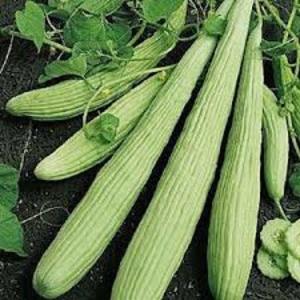 The benefits of this plant are preserved not only in fruits, but also in seeds with leaves, which makes it possible to use bottle gourd in various industries. Thus, it found its application not only in medicine and cooking, but also in decorative arts: kitchen utensils are made from its fruits.
The benefits of this plant are preserved not only in fruits, but also in seeds with leaves, which makes it possible to use bottle gourd in various industries. Thus, it found its application not only in medicine and cooking, but also in decorative arts: kitchen utensils are made from its fruits.
Of course, the main role here was played by the unique shape of the fruit: from elongated and pot-bellied to similar to any animal. So decorative bottles and unusual flower vases come out of the hands of craftsmen.
In folk medicine, both leaves and fruits are used. An infusion is prepared from the pulp, which helps to strengthen the immune system, and the extract from the leaves is suitable for the treatment of skin diseases.
Also, masks for the face and hair are made from the pulp. They nourish the skin well, relieve dryness and flaking, and heal wounds.
But this vegetable culture was most widely used in cooking, although only the fruit is used for this purpose. A young vegetable tastes like a cucumber and is consumed raw. But mature ones, with pumpkin flavor, are not eaten raw. They are used to make vegetable casseroles, fried or added to cereals. Also, the pulp of the vegetable is pickled as a winter preparation.
When used in cooking, lagenaria has a positive effect on the body: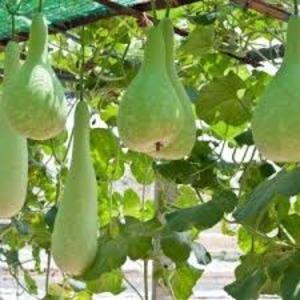
- improves immunity due to the content of vitamins and minerals;
- normalizes metabolism - fiber has a beneficial effect on the intestines;
- normalizes blood pressure and heart function due to the content of sodium, magnesium and potassium contained in fruits;
- lowers cholesterol levels;
- has an antioxidant effect.
Harm and contraindications
Gorlyanka is a useful plant that has no age or other restrictions. Therefore, there is practically no harm from it, but do not forget about individual intolerance and allergic reactions.
Types and features of the plant
Some varieties of the southern culture are grown because of the delicious fruits, others because of the originality of the forms. What are snake, cobra, log and common lagenaria? Where did their names come from, what are the similarities and differences with each other, what benefits are creeping vines of a bottle or dish pumpkin - let's take a closer look.
Calabaza
The fruit of this species is able to surprise with its size. Up to 50 cm in length, elongated top, it resembles a large pear. It makes comfortable decorative jugs.
But 50 cm is not the limit, two-meter pears grow, but extremely rarely. Pumpkin ripens within 200 days after sowing.The length of the lashes reaches 15 m with regular exposure to sunlight.
Read also:
The benefits of pumpkin seed oil for women.
Why pumpkin seed flour is good and how to use it for health.
Pumpkin and honey for the liver: how to cook and consume correctly.
Bottle lagenaria
This species is considered compact. The length of the lashes reaches 3 m, and the pumpkins themselves do not exceed 70 cm in length. Outwardly, it resembles Lagenaria Calebas, but the fruits are practically not used for food.
Grown for decorative purposes. The scientific name for this species is Butles.
Lagenaria field-shaped
Young pumpkins of this variety are outwardly similar to squash. But then they grow up to two meters in size with a weight of 10 kg. The plant itself branches well, the leaves are large, similar to pumpkin.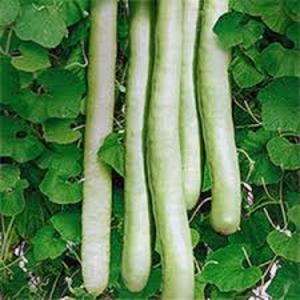
Lagenaria serpentine
The fruit is outwardly similar to the lagenaria log-shaped, but noticeably smaller, with a characteristic snake bend, for which it got its name.
Length no more than 70 cm with a weight of 7 kg. This type is well used in cooking. Young fruits are sweet, but the leaves also have nutritional value.
Cobra
The fruits of this variety have an unusual shape and unusual color. The base is round, and the "neck" is thin and curved with further thickening, which looks like a snake's head. Light green spots on a dark green background complete the created illusion.
Cobra is demanding on the temperature regime, therefore it takes root only in the southern strip. It is grown by seedlings, otherwise the cold will come before the ripening of its fruits.
This species has both nutritional and decorative value. Has healing properties: helps with diseases of the heart, blood vessels and gastrointestinal tract.
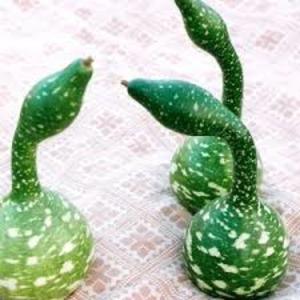
Goose in apples
The apple-covered goose is similar in appearance to the Cobra variety: wide at the bottom, it ends with a long, curved "gooseneck" (without thickening at the end, which resembles the head of a snake).
The color of this species is dark green with white spots. This lagenaria is classified as tall, its lashes rise up to 15 m. The weight of one fruit is up to 1.5 kg, but some fruits in good years can outgrow, gaining weight up to 8 kg.
Goose in apples is a fruitful variety with a long shelf life. The collected September fruits will last until spring, retaining their color and taste.
Lagenaria clavate
This variety does not like shaded areas. Spreading long lashes, he is not averse to soak up the sun. During flowering, the bush is strewn with white bells.
The vegetables themselves reach 2 m in length. This species got its name because of the similarity with the mace - the elongated lower part smoothly turns into a narrow and long one.
How to grow it
Growing from seeds and seedlings, planting in open ground and care, ripening of annual fruits - this topic captures gardeners more and more every year. And it is not surprising: high yields, shady arches of vines, decorative value cannot leave indifferent even the most demanding gardeners.
Features of sowing seeds
Bottle gourd seeds are not similar in shape and structure to those of their gourd family. Square at the bottom and elongated in length, they are drawn, as if with a thin brush, two light stripes along the seed.
Due to the dense skin, it is impossible to do without special preparation, otherwise it will take a long time for the lagenaria to germinate. The process is accelerated by cutting the top or soaking the seeds in a growth promoter, and then placing them in wet sawdust. Do not forget that the southern plant loves warmth, so the temperature should be at least 23 ° C.
Planting seedlings in the ground
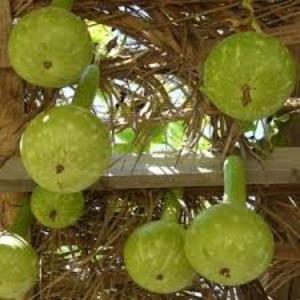 A similar method is suitable for the middle band. Seedlings grown from April seeds of Lagenaria are transplanted into small holes, slightly covered with humus and wood ash. By the time of transplantation, young bushes reach 10 cm in height and are quite capable of growing in open ground.
A similar method is suitable for the middle band. Seedlings grown from April seeds of Lagenaria are transplanted into small holes, slightly covered with humus and wood ash. By the time of transplantation, young bushes reach 10 cm in height and are quite capable of growing in open ground.
When planting lagenaria in rows in open ground, the distance between the bushes is usually from 30 to 75 cm.Do not forget that the bottle gourd is a vine that will curl. Therefore, the need for support is inevitable.
Growing gourd pumpkin in a greenhouse not only brings the harvest time closer, but also helps to protect it from early frost.
Watering and care
The decorative liana will grow powerful and large only in a sunny place where there are no drafts. Only under such conditions can you count on a good harvest. In the shade, the leaves and fruits will be small. It will easily take root in neutral or slightly acidic soil.
Caring for lagenaria is simple: in dry weather, it must be watered twice a week. After the fruits ripen, watering is stopped. As for feeding, here it is quite possible to do with mineral complexes.
So that the liana does not grow much, the lashes are pinched. Such a procedure promotes the setting of female inflorescences, which yield a harvest.
Conclusion
The unusual multispecies southern culture never ceases to amaze with the uniqueness of forms, useful properties and wide application in various industries.
Unpretentious care, simple cultivation of lagenaria from seeds and seedlings, unusual inflorescences and shapes of the fruit, decorative vines - all this makes the vegetable popular not only among gardeners, but also decorators. Amazing fruits of various forms are used not only by chefs, but also by craftsmen who turn the fruit into exquisite jugs and vases.